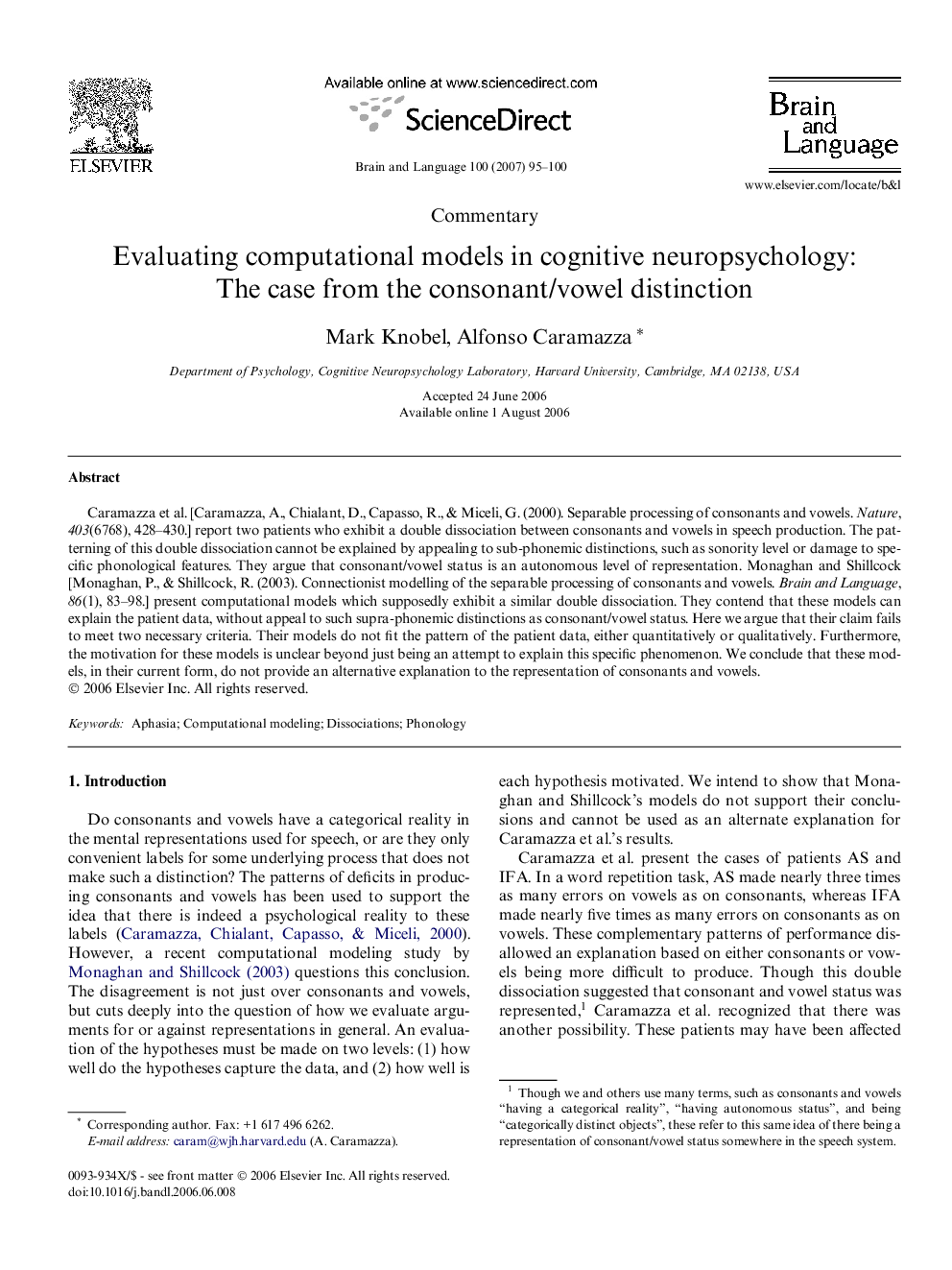| Article ID | Journal | Published Year | Pages | File Type |
|---|---|---|---|---|
| 926147 | Brain and Language | 2007 | 6 Pages |
Caramazza et al. [Caramazza, A., Chialant, D., Capasso, R., & Miceli, G. (2000). Separable processing of consonants and vowels. Nature, 403(6768), 428–430.] report two patients who exhibit a double dissociation between consonants and vowels in speech production. The patterning of this double dissociation cannot be explained by appealing to sub-phonemic distinctions, such as sonority level or damage to specific phonological features. They argue that consonant/vowel status is an autonomous level of representation. Monaghan and Shillcock [Monaghan, P., & Shillcock, R. (2003). Connectionist modelling of the separable processing of consonants and vowels. Brain and Language, 86(1), 83–98.] present computational models which supposedly exhibit a similar double dissociation. They contend that these models can explain the patient data, without appeal to such supra-phonemic distinctions as consonant/vowel status. Here we argue that their claim fails to meet two necessary criteria. Their models do not fit the pattern of the patient data, either quantitatively or qualitatively. Furthermore, the motivation for these models is unclear beyond just being an attempt to explain this specific phenomenon. We conclude that these models, in their current form, do not provide an alternative explanation to the representation of consonants and vowels.
